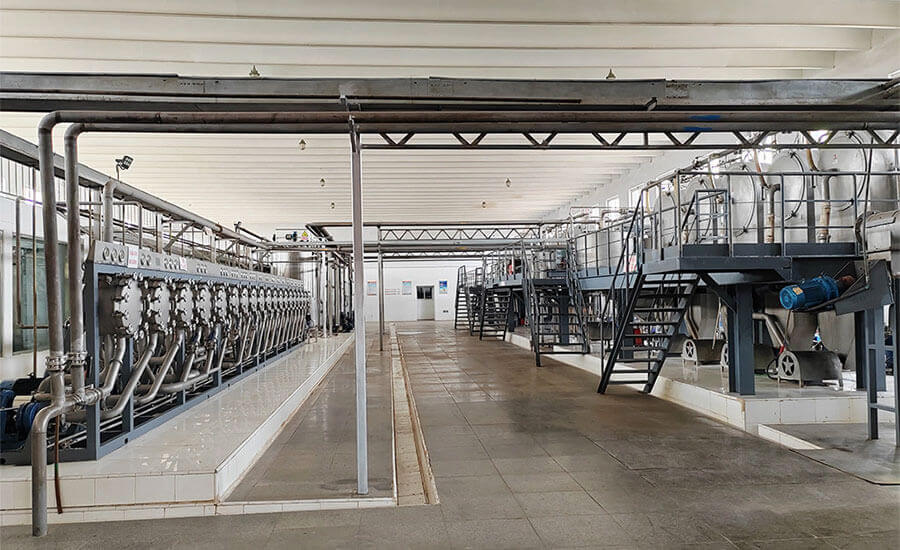
The working principle of the cyclone is to use the material to make a spiral rotation in the tube to generate different centrifugal forces, thereby realizing the separation of materials.
In starch processing, the cyclone can effectively separate starch from other components (such as protein, fine fibers, and soluble impurities), thereby improving the purity of starch.
The cyclone can also be used for unit operation tasks such as washing, refining, and concentration in automated starch production lines. By adjusting the operating parameters of the cyclone, key indicators such as starch purity and concentration can be controlled to meet the needs of different processes.
The cyclone replaced the traditional sedimentation tank process and greatly improved the processing efficiency. In starch processing, the use of the cyclone can shorten the production cycle, reduce floor space, and reduce energy consumption and labor costs.
The cyclone has a high degree of automation, which reduces the need for manual operation, thereby reducing the physical labor of workers.
The cyclone is not only suitable for the starch processing industry but can also be used for tasks such as liquid-liquid and solid-liquid separation. In the food, medicine, fermentation, chemical, and other industries, cyclones are widely used.
In general, cyclones play a role in starch processing by improving product quality, reducing production costs, reducing physical labor, and improving production efficiency. With the continuous advancement of science and technology and the continuous optimization of technology, the application of cyclones in the field of starch processing will be more extensive.